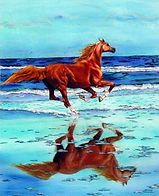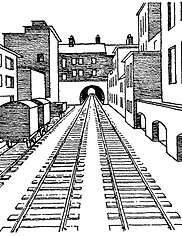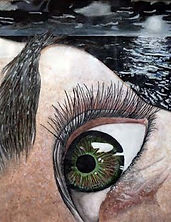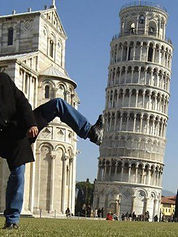


PROVIDENCE GIRLS'
ART ZONE


PRINCIPLES OF ART & DESIGN
The principles of design are the recipe for a good work of art. The principles combine the elements to create an aesthetic placement of things that will produce a good design. The way in which these principles are applied affects the expressive content, or the message of the work.


UNITY / HARMONY
Unity is the relationship among the elements of a visual that helps all the elements function together. Unity gives a sense of oneness to a visual image. In other words, the words and the images work together to create meaning. When all the elements in a work look as though they belong together, the artist has achieved unity.
Ways to Create Unity:
-
Repetition - By using similar lines, colors, shapes, textures, values or forms, you can create a feeling of unity because of the similar elements being used.
-
Proximity - one of the simplest ways to create unity is by grouping objects in a work of art closely together.
-
Continuation - A subtle method of unifying a work of art, which involves the continuations of a line, edge or direction from one shape or area to another.

CONTRAST
Contrast refers to differences in values, colours, textures, shapes, and other elements.
Contrasts create visual excitement and add interest to the work.
Too much contrast scattered throughout a painting can destroy unity and make a work difficult to look at. Unless a feeling of chaos and confusion are what you are seeking.
Some of the most common ways of creating Contrast are by creating differences in:
-
Sizes – large vs. small
-
Shapes – geometric vs. organic/free form, real vs. abstract
-
Values – light vs. dark
-
Colors – warm vs. cool, complementary, intense vs. dull
-
Textures – smooth vs. rough
-
Direction – horizontal vs. vertical/diagonal/curved

MOVEMENT
Visual movement is used by artists to direct viewers through their work, often to a focal area.
Such movements can be directed along lines, edges, shapes, and colours within the works, but moves the eye most easily on paths of equal value.
Movement can be created by using repetition or Pattern, Rhythm, and action. When trying to create movement in compositions, remember that the eye of the viewer:
-
Travels along actual lines within your composition.
-
Moves from larger to smaller elements within your composition.
-
Moves from darker to lighter elements within your composition.
-
Moves from colored to non-colored elements.
-
Moves from real to abstract shapes.
-
Follows the gradual changes in sizes of repeated shapes or elements.

PERSPECTIVE
Perspective is created through the arrangement of objects in two-dimensional space to look like they appear in real life.
Perception can be achieved through the use of relative sizes of objects, overlapping objects, and blurring or sharpening objects.
-
Linear perspective: is created by making closer objects appear larger than farther objects, proportionate to the distance between lines that recede towards a vanishing point on the horizon.
-
Atmospheric perspective: shows objects that are closer to the foreground with more detail than objects that are farther away. Realistic artworks normally use both.

BALANCE
Balance refers to the distribution of visual weight in a work of art. We feel more comfortable--and therefore find it more pleasing--when the parts of an artwork seem to balance each other. Imbalance gives us an unsettled feeling, and that is something that for most artists is not the desired effect.
Balance can be either symmetrical or asymmetrical in a work of art.


PATTERN
It refers to the repetition of an element or elements in artwork.
Patterns often occur in nature, and artists use similar repeated motifs to create pattern in their work.
Pattern increases visual excitement by enriching surface interest.
-
Random Pattern – a pattern in which the elements are repeated but in no particular way
-
Fixed Pattern – a pattern in which the elements are repeated over and over again in specific way

EMPHASIS
Emphasis is used by artists to create dominance and focus in their work.
Artists can emphasize
colour, value, shapes, or other art elements to achieve dominance.
Various kinds of contrast can be used to emphasize a center of interest.
Ways to Create a Focal Point
-
Emphasis by Contrast: The objective of contrast is to produce maximum visibility. The more contrast there is the more noticeable an item is.
-
Emphasis by Isolation: If most of the elements in a work of art are grouped closely together, an object by itself stands out as a focal point.
-
Emphasis by Placement: An object placed in the center will often be perceived as a focal point. One of the best ways to do this is through radial placement. All lines will somehow lead to the center point of the piece.

PROPORTION
Relationships of parts to each other and to the whole work.
Our sense of proportion in art comes from the human body. Proportions are often normal and expected. They can also be exaggerated and distorted. Sometimes proportions are idealized – more perfect than you might see in nature.
LINKS
Elements and Principles of Art:

